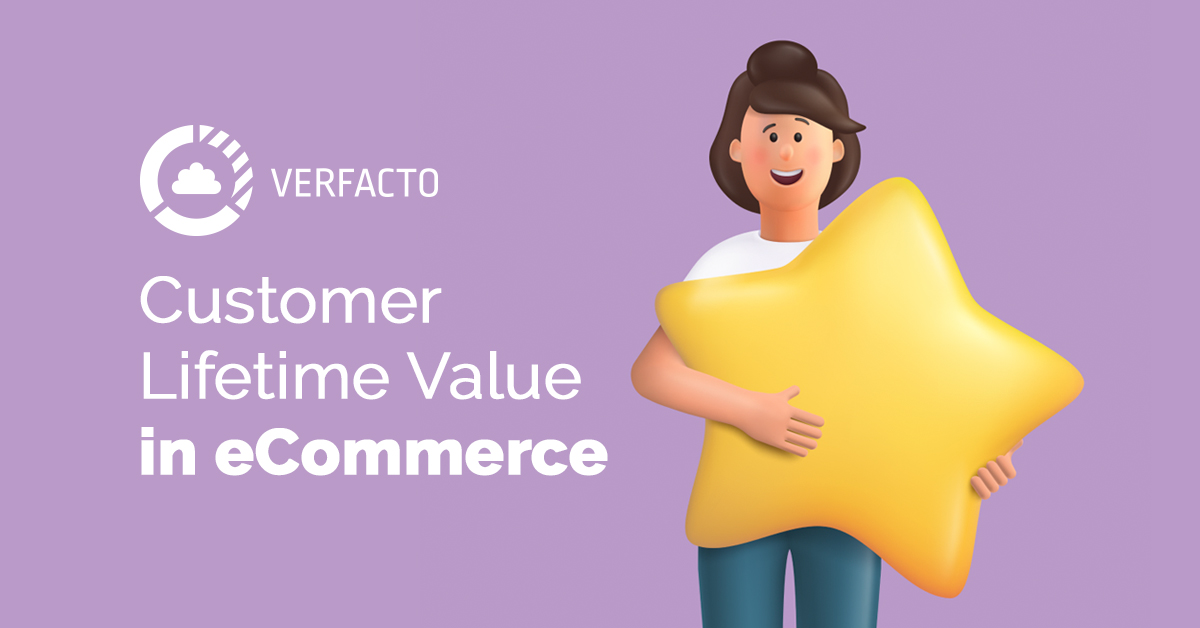If you’re running an eCommerce store, you likely have a range of metrics at your disposal. From cost per lead and conversion rate to average order value and checkout abandonment rate, there are a lot of numbers that help keep your business on track.
Yet, there is one metric that marketing experts constantly overlook: Customer Lifetime Value.
The importance of Customer Lifetime Value (CLV or LTV) in eCommerce is almost always underappreciated. In fact, when asked, roughly 66% of marketers were ‘unaware of the term and its connotations.’ If you’re part of that 66%, then this guide is for you.
We’ll walk through exactly what customer lifetime value is and we’ll explore how you can use it to boost your sales over time, create a host of satisfied customers, and make intelligent A/B testing scenarios.
What is Customer Lifetime Value?
Customer lifetime value, also known as LTV, is a metric that describes the total value of a customer on your site based on their sales over time. It takes into account every single sale a user makes on your site, from their very first purchase right up to their most recent buy.
Customer lifetime value is also intrinsically linked with customer satisfaction. Simply put, if a customer is willing to return to your store and make repeat purchases, then it’s likely that you have a satisfied customer who is part of a loyal user base.
If you’re attempting to measure customer satisfaction, LTV is one of the critical data points you should look out for.
Take good care of your most spending customers
Implement LTV attribute into your PPC, Email or On-site marketing campaigns and. Use it as a custom trigger or a way to segment your audience.
Why is Customer Lifetime Value Important?
Understanding your Customer Lifetime Value gives you a better overview of your eCommerce business across several important areas. It can also help you pinpoint areas for improvement and showcase what is working well already. Here are a few more reasons CLV is so important for your eCommerce business:
- It helps you measure the impacts of your marketing strategy. Your CLV will help you understand which of your marketing efforts drive more sales, reduce churn, and increase your customer lifespan.
- It helps you better allocate financial resources and reduce customer acquisition costs. With the comprehensive overview that comes from analyzing this metric, you’ll have a better understanding of your goals and your clients’ timeline. You’ll have more clarity about each phase and how to make smarter decisions to improve your ROI. You’ll also reduce acquisition costs by understanding which clients are worth your efforts.
- It improves customer retention. Once you measure your CLV, you will be more aware of how your clients are behaving and how much value they bring you. With that information, you can focus on small improvements in those areas that can bring you more profit, like customer retention. Creating customer loyalty programs or offering great customer service, for instance, can increase your average customer lifespan.
- It unveils your most profitable customers. With CLV, you get a more in-depth look into your customer profitability, which will allow you to create marketing campaigns that are focused on them specifically. You can also focus on acquiring new customers that have a similar profile as your most valuable customers.
How Does LTV Impact Revenue?
As customer lifetime value increases, the average amount each customer spends will also increase. Due to this, a high LTV will signal a boost in revenue as your customers are buying more products over time.
What’s excellent about return customers is that you don’t have to spend money to obtain them. After their first time on your site, they already know your brand and are familiar with your products. Instead of finding your business through a marketing campaign, they’ll simply head straight to your website to make a purchase.
An existing customer is also far more likely to buy additional products than a new customer. It is estimated that a business will have 60-70% more success selling to an existing customer over a new one.
When it comes to customers, retention trumps acquisition every single time. That’s why a high customer lifetime value is an excellent indicator of an eCommerce business with increased revenue.
How Does CLV Relate to CAC in eCommerce?
Another essential metric to understand when running a business is your CAC, or customer acquisition cost. This value is the total cost of acquiring a new customer, taking into account marketing, special first-time discounts, and advertising fees.
Without a strong knowledge of your average CLV, you can’t gauge if your CAC is too high. For example, if a customer costs $100 to acquire but you didn’t know your CLV, you would be left in the dark about how much money that customer will make you.
When you factor in a customer lifetime value of $750, suddenly that CAC $100 doesn’t seem quite so bad.
Monitoring these two ecommerce metrics side by side will also help you determine when you need to make a marketing change. If your CAC is starting to outweigh the LTV of a customer, your business is in danger of losing money.
The benchmark LTV:CAC ratio should be 3:1. That means every customer you obtain should spend three times as much as what it cost you to find them. As the CAC declines with repeat customers, LTV will rise, making this ratio fall even further in your favor.
What is a Good Customer Lifetime Value?
A good Customer Lifetime Value for eCommerce is usually three times higher than your Customer Acquisition Costs. If your CLV is below that, it’s a red flag. It means you should focus on strategies to increase your LTV.
How to Increase Customer Lifetime Value in eCommerce Stores
Boosting your LTV should be one of your primary goals as an eCommerce store. Let’s take a look at some methods for increasing customer LTV that you can start today:
- Create a customer loyalty program: customers who return again and again will cut down on your marketing costs (CAC) and boost your LTV. Although it may seem counterproductive to offer a slight discount to repeat customers, the amount of money you’ll be saving will far outweigh this expenditure.
- Take advantage of upselling and cross-selling: using Verfacto’s cross-pairing suggestions, you’ll be able to see which items in your store are regularly bought together. By bundling products together with cross-selling, you’ll be able to increase your average order value and boost LTV.
- Offer the best customer service: having great customer service not only helps you to get new customers, it also ensures that your existing customers stay around for longer. Get ready to provide the best customer service you can and it will definitely help your CLV increase even higher.
- Create content that provides value: creating content that actually helps your clients and leads is a great way to educate people about your products, their benefits, and the reasons why they should choose you. Content that represents your brand and shares your values will help customers to feel connected and generate loyalty.
- Profit from user-generated content: user-generated content is one of the best ways to validate your products and talk about their benefits without being too salesy. Social media is an awesome tool to bring those customers closer to you and remember you exist.
- Benefit from data-driven marketing: tools like Verfacto use the data you collect to give customers the right incentives to engage with your business or purchase from you. This is one of the most surefire ways to increase your LTV because it automates several parts of the process using valuable data-driven insights.
But that’s just the beginning! We’ve written a whole article detailing ways you can increase your customer lifetime value over time.
How Do You Calculate Lifetime Value in eCommerce?
To get to your CLV, you first need to have a few numbers:
- Average Order Value (AOV)
- Average Purchase Frequency (APF)
- Average Customer Lifespan (ACL)
Once you have these, you’ll multiply the Average Order Value by the Average Purchase Frequency Rate, and then by the Average Customer Lifespan. The formula looks like this:
AOV x APF x ACL = CLV
How Do You Predict Customer Lifetime Value?
There are a few ways you can predict your Customer Lifetime Value for eCommerce businesses. You can use the aggregate model, cohort model, probabilistic model or the machine learning models. Here are the basics about each type of predictive Customer Lifetime Value:
- Aggregate Model: this is the most common and straightforward way to predict CLV. It uses a constant spend and churn rate for all customers, giving you an average prediction for your clients as a whole – aggregating them in one big single group.
- Cohort Model: this model segments customers into cohorts, calculating the CLV for each group. These cohorts are usually set based on customer start date. This gives you a more accurate number than the Aggregate prediction model, since it breaks down your big group of clients into smaller ones.
- Probabilistic Model: the probabilistic calculations also use AOV, APF and ACL to get to a prediction. We won’t go into all of the technical details in this article, but this model will change your approach and it will also change the results you get.
- Machine Learning Models: these models use Artificial Intelligence (AI) and well-trained algorithms to predict CLV and, therefore, provide more accuracy. For the ML process to work, we need to estimate Recency, Frequency, and Monetary Value (RFM) and have previous data to use as a source.
How to Use LTV to Supercharge Your Marketing Efforts
Knowing a customer LTV is fantastic, but applying it to your marketing strategies is even better. By integrating the LTV metric into your digital marketing campaigns, you’ll be able to run A/B testing and see which changes could lead to more revenue for your business.
For example, let’s pretend that your product is a monthly subscription service. You offer either one-month, six-month, or annual subscriptions.
First, we run some testing and discover that when we remove the six-month option, LTV increases as more customers decide to opt for the 12-month option over the 1-month option. Due to this change in LTV in the customers we’ve tested, we can see that a clear next step would be to remove the 6-month subscription option for all customers.
By taking customer behavior into account — including psychological profiles like the type of buyer and which products a customer is interacting with — Verfacto will be able to estimate the LTV of a customer ahead of time. This can save you time when running tests and optimizing your store.
Verfacto offers a hassle-free way to monitor and optimize your customer LTV. With a free one-month free trial, you could get started today!
Conclusion
Although often overlooked, LTV is one of the most vital metrics to track when running an eCommerce store.
If you’re looking for an easy way to manage your LTV, take advantage of the 1-month free Verfacto trial. Verfacto provides an easy way to monitor, improve and predict your Customer Lifetime Value, making the process of boosting your sales and creating satisfied customers as easy as possible.
Take good care of your most spending customers
Implement LTV attribute into your PPC, Email or On-site marketing campaigns and. Use it as a custom trigger or a way to segment your audience.



